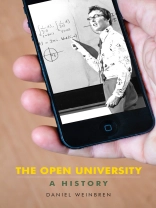This historical perspective on The Open University, founded in 1969, frames its ethos (to be open to people, places, methods and ideas) within the traditions of correspondence courses, commercial television, adult education, the post-war social democratic settlement and the Cold War. A critical assessment of its engagement with teaching, assessment and support for adult learners offers an understanding as to how it came to dominate the market for part-time studies. It also indicates how, as the funding and status of higher education shifted, it became a loved brand and a model for universities around the world.
Drawing on previously ignored or unavailable records, personal testimony and recently digitised broadcast teaching materials, it recognises the importance of students to the maintenance of the university and places the development of learning and the uses of technology for education over the course of half a century within a wider social and economic perspective.
Inhoudsopgave
Part I: Creating a university of the air
1. The challenge of The Open University
2. Opening a castle of the air
Part II:The first two decades
3. Growth and acceptance: c. 1969–89
4. Sensemaking and sociability: The first two decades of learning
Part III: The Open University since the 1990s
5. Convergence and divergence
6. Pedagogies promoting participation
Part IV: Half a century of learning
7. Open to people
Select bibliography
Index
Over de auteur
Daniel Weinbren is a Fellow in History at the Open University












